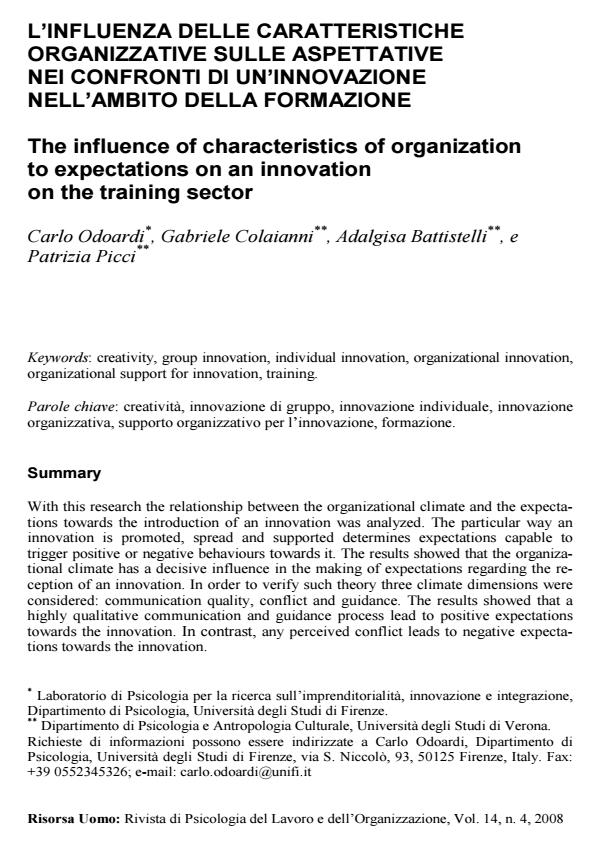The influence of characteristics of organization to expectations on an innovation on the training sector
Journal title RISORSA UOMO
Author/s Carlo Odoardi, Gabriele Colaianni, Adalgisa Battistelli e Patrizia Picci
Publishing Year 2008 Issue 2008/4
Language Italian Pages 15 P. 473-487 File size 94 KB
DOI
DOI is like a bar code for intellectual property: to have more infomation
click here
Below, you can see the article first page
If you want to buy this article in PDF format, you can do it, following the instructions to buy download credits

FrancoAngeli is member of Publishers International Linking Association, Inc (PILA), a not-for-profit association which run the CrossRef service enabling links to and from online scholarly content.
The influence of characteristics of organization to expectations on an innovation on the training sector - With this research the relationship between the organizational climate and the expectations towards the introduction of an innovation was analyzed. The particular way an innovation is promoted, spread and supported determines expectations capable to trigger positive or negative behaviours towards it. The results showed that the organizational climate has a decisive influence in the making of expectations regarding the reception of an innovation. In order to verify such theory three climate dimensions were considered: communication quality, conflict and guidance. The results showed that a highly qualitative communication and guidance process lead to positive expectations towards the innovation. In contrast, any perceived conflict leads to negative expectations towards the innovation. Keywords: creativity, group innovation, individual innovation, organizational innovation, organizational support for innovation, training.
Carlo Odoardi, Gabriele Colaianni, Adalgisa Battistelli e Patrizia Picci, The influence of characteristics of organization to expectations on an innovation on the training sector in "RISORSA UOMO " 4/2008, pp 473-487, DOI: